Materials That Reflect Black Light
Black lights reflect fluorescent substances that absorb short wave-length light. UV rays that begin at the extreme end of the visible light spectrum move into the invisible short-wave spectrum, producing ultraviolet radiation. "Certain color pigments and materials absorb the invisible radiation," and the radiation is then emitted, causing the substance to glow, according to Elementalled.com. There are many organic materials, household items and other fluorescent materials that reflect black light.
Organic Materials
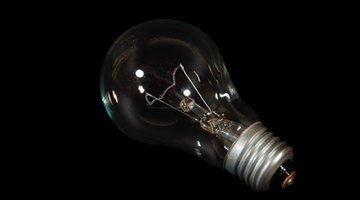
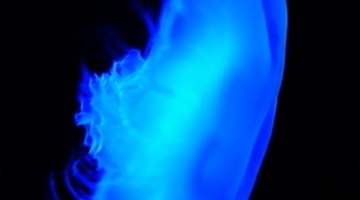
Organic materials are naturally occurring substances. From bodily fluids to animals and gemstones, there are many organic materials that have the natural fluorescence needed to reflect black light. If you've ever stood under a black light, you may have noticed that your teeth glow. Natural phosphors within your teeth and fingernails cause them to reflect black light. Black lights also reflect certain substances that are not visible in normal light. Bodily fluids that have natural fluorescence include blood, semen, saliva and urine. When these substances are wiped away they are no longer visible under natural light. Shining a black light on the area will illuminate the natural phosphors, causing the area to glow. Jellyfish and certain insects have proteins that make them fluorescent, causing them to glow beneath a black light. Gemstones such as opal, amber, quartz, gypsum, talc and agate also contain fluorescent properties.
Household Items
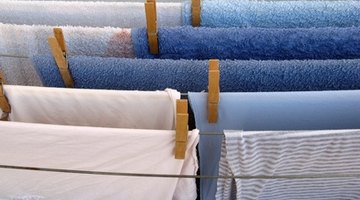
Phosphors that cause materials to glow are found in many household items including TV screens, plastics, fabrics, paints, cosmetics and other products. Whitening properties in laundry detergents cause phosphors to transfer to fabrics. These phosphors have fluorescent properties that cause certain clothing to glow beneath a black light. Club soda and tonic waters contain fluorescent compounds that cause them to light up when illuminated. Vitamins such as thiamine, niacin, riboflavin and vitamin A have glowing properties. A mixture of vinegar and vitamin B-12 powder will also glow.
Paints
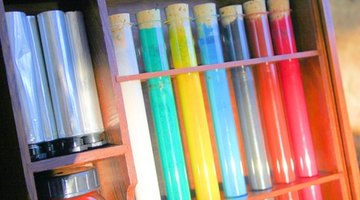
There are many paints including DayGlo, fluorescent, tempura, poster and spray paint that will glow when illuminated with a black light. Invisible black light paints appear white or clear with a milky haze and are seldom noticed until they are illuminated. Older paints do not have the phosphors needed to glow.
Fluorescence
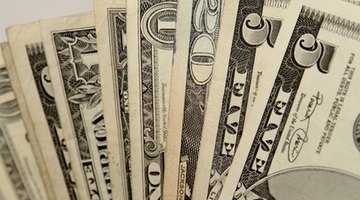
Many materials are treated with fluorescent compounds to make them appear whiter. Fluorescent treatment also makes objects unique, preventing forgery. Fingerprints are dusted with fluorescent powder, causing them to glow, and in some cases, fluorescent dyes are injected into liquids to assess leaks in tanks and containers. Forgeries are easily detected with materials that reflect black light. Postage stamps use inks that contain fluorescent dyes. Amusement parks use hand stamps with fluorescent ink to prevent fraudulent re-entry, and money contains fluorescent strips to prevent counterfeiting. Since the 1950s, white paper is treated with a fluorescent coating to make it appear brighter. This coating helps in the identification of forged historical documents.
References
Resources
Photo Credits
- black light bulb image by frog from Fotolia.com
- jellyfish image by toschphoto from Fotolia.com
- Laundry image by Fenia from Fotolia.com
- paint kit image by Allyson Ricketts from Fotolia.com
- money image by Horticulture from Fotolia.com
More Articles



